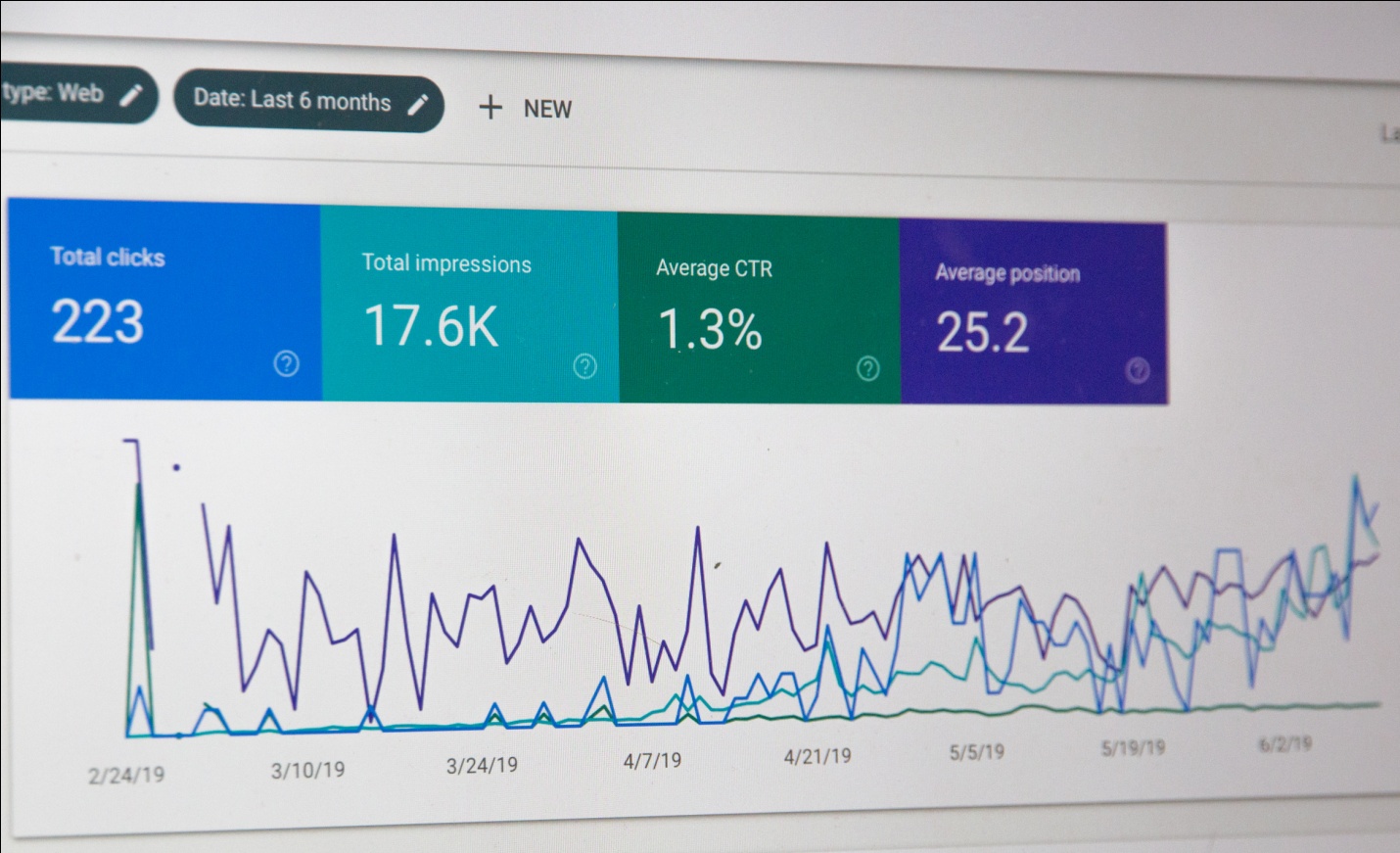Whether you outsource your website SEO to a third-party agency or hire an in-house SEO expert, search engine optimization is an investment. Just as you determine the expected returns from other marketing channels such as your social media marketing campaigns, demonstrating the return on investment (ROI) from your website SEO is crucial for SEO success. It helps you measure the impact of the existing SEO efforts and refine them for better results.
In this guide, we’ll take you through how to measure the ROI of your website SEO.
Calculate Your SEO Investment
Before anything else, you need to find out what your SEO investment is worth. This can be done by evaluating the costs associated with the channel and combining them. They may include:
SEO Tools
SEO tools are often not viewed as SEO investment and are included in technology cost. To accurately calculate the ROI of your SEO activity, you must view them as an SEO investment. For example, if you’re leveraging a MOZ SEO product, account for the monthly cost of your chosen tool as well as of other paid software when calculating the ROI.
Agency Cost
If you hired an SEO agency for your website SEO, calculating your SEO becomes remarkably easy. Most agencies charge a fixed monthly fee for specific SEO products. Take this monthly charge straight into your investment calculation.
In-House Resources
If you have staff dedicated to SEO activities, calculating your SEO investment should be simple. Their salaries will become part of the investment. However, if your in-house SEO resources are also responsible for other tasks such as copywriting, implement a system to track their time spend on SEO obligations. Then, split their costs to an hourly rate based on their tracked time. Your monthly SEO investment will thus be based on the number of hours your staff spent on SEO activities.
Once you’ve calculated the above-mentioned costs, add them up to determine your SEO investment. These can change over time so be sure to account for any changes when calculating the ROI for your website SEO.
Define Your Primary Goal
You can always have multiple micro and macro goals, but it’s important to define one primary end goal of your website to calculate the ROI of its SEO. When defining this goal, take into account clients’ needs and make sure that the goal is measurable and specific.
Remember, if you can’t track your goal, there’s no way to improve your efforts to achieve the goal. Having a measurable goal helps you discover where you stand and what else is needed to accomplish it. Similarly, the goal you set should be clear cut, there shouldn’t be any ambiguity. More importantly, share your primary goal with your entire SEO team, so that their efforts are aligned to it, improving the chances of goal achievement.
Determine the Metrics to Achieve Your Primary Goal
Now that you have a primary, ultimate goal in front of you, it’s time to plan your direction and path. This is where SEO performance metrics come into play. You’ll need to decide which metrics or benchmarks will assist you in keeping a better pulse on your website progress and health. Among the most important metrics are engagement metrics, which track visitors’ behavior as they reach your site. Examples of engagement metrics include:
Bounce Rate
Bounce rate indicates that a user visited a landing page on your website, but left without navigating any further. While most digital marketers are determined to lower this rate, but studies prove that it has little to do with website quality or user experience. Sometimes, people only come to find your address, phone number, or business hours and will leave the site to call you directly or visit your brick-and-mortar facility. Thus, your business could be experiencing skyrocketing growth despite having a high bounce rate.
Pages per Visit
This metric is valuable for those looking to engage their audience and prompt them to advance to the next step. But again, if a visitor came to a landing page, got what they wanted, and left, it will lower your Page Per Visit. I similar cases where the goal of your webpage is independent of other pages on the site, you need not worry about a low Page Per Visit.
Time on Page
This metric discloses how long people spend on a webpage. A low Time on Page can be good or acceptable depending on the type of webpage and its intent. For example, it’s okay to have a low rate for the ‘Contact Us’ page as it won’t take long for people to note down the contact information and leave. However, if visitors are spending not more than 10 seconds, on average, on a long-form blog post of over 2000 words, chances are the content is not being consumed.
Scroll Depth
Are your site visitors scrolling down individual webpages? Are they reaching the most important content on them? These are the questions Scroll Depth answers. If your webpages have a low scroll depth, you may need to move your critical content such as CTR, contact form, etc, higher up on the pages and/or improve the content quality to encourage visitors to keep scrolling down.
Keyword Rankings
When you optimize your webwages for specific keywords, you’ll want to rank high for those keywords on search engines. This metric measures that rank.
Conversion Rate
High search traffic is desirable but won’t necessarily translate into high conversions. Conversion rate is, by far, the most accurate ROI measurement of your website SEO. For a single goal, the rate is calculated by dividing the number of conversions by the number of unique visits. You can apply the metric to any goal such as account creation, email subscription, an online purchase, and so on. Even if a goal doesn’t guarantee a sale, it will bring the user much closer to making a purchase in the near future.
Number of Backlinks
These are the total number of links directing to your site. When tracking this number, don’t ignore the quality of links.
Search Traffic
Measuring your site’s organic traffic extends beyond ranking high on Google. Your answer to search queries must also be chosen by visitors so that your site continues to generate traffic. Among the best tools to monitor your search traffic is Google Analytics. Let’s find out how to use this platform to obtain traffic insights:
How to Use Google Analytics to Obtain Traffic Insights
Google Analytics is a free tool that offers enormous amount of data on your website’s performance. The information it displays is so overwhelming that you can easily feel lost if you don’t know where to look. Among the most important SEO performance metrics you don’t want to miss on GA include:
Traffic to Your Site for Specific Periods
You can check the users, pageviews, total sessions, etc. to your site over specified periods. You can select your data range to obtain the results for that period. You may even compare the data for two separate periods.
Click-Through Rate (CTR)
This is the percentage of users that chose your page from search results, measuring the effectiveness of your page title and meta description.
Number of Visits a Page Receives
To evaluate the performance of specific pages on your site, refer to Site Content reports. Here you can discover the number of unique visitors a webpage received during a specified date range.
Traffic by Campaign
If you run ad campaigns on Google AdWords or social media, you’ll certainly want to track website traffic by campaign. For better attribution, you may use UTM (Urchin Tracking Module) codes. Once you’ve designated the source, campaign, and medium, include the codes to the end of your URLs. The data will ten begin to populate in ‘Campaigns’ reports on GA as people click on the UTM-code links.
Isolate Organic Traffic
Google Analytics also allows you to monitor website traffic by channel. This way, you’d know how much traffic is coming from organic searches and how much from paid campaigns.
Use Other Tools to Evaluate Your Site’s Health
Conducting an SEO audit for your website from time to time is a great way to evaluate your site’s health. We recommend search engines’ own tools to for SEO audits. These can include:
Google Search Console
This tool offers a wide spectrum of reports that help you track errors, user engagement, and opportunities.
Mobile-Friendly Test
As of the fourth quarter of 2019, 61% of Google’s US organic search traffic originated from mobile devices. Keeping this fact in mind, you just can ignore mobile-friendliness when monitoring your SEO performance. Mobile-friendliness Test is a great tool that assesses the user-friendliness of your website on mobile devices.
Bing Webmaster Tools
This tool works for Bing similar to how Google Search Console works for Google. It won’t just point out the issues you site has but also suggest improvements.
Structured Data Testing tool
This tool helps you confirm whether your website is leveraging schema markup or structured data properly.
Aspects to Consider When Tracking SEO Performance
When evaluating your SEO performance and auditing your site, keep the following aspects in mind:
Crawlability
If your robots.text file is blocking Bingbot or Googlebot, your primary webpages may not even be crawalable by search engines. Make sure you have your web developer fix that as well as have an accurate sitemap.xml file in place, which directs crawlers to your webpages.
Titles and Meta Descriptions
Tiles and meta descriptions are more important than most of us think. Since they are a summary of content present on each page, they must be written in a way that entices users to click your result instead of others in search engine rankings.
Content Quality
The content on your website plays a crucial role in driving SEO performance. High-quality content that genuinely delivers value to your audience and solves their problems will establish you as a leader in your industry. When that happens, site visitors will not just spend more time on your blog, but also keep returning to it from time to time. All these factors improve website SEO. Also, they’ll choose you when it’s time to make a purchase.
Page Speed
Your website should load quickly both on desktop and smart devices. If the page loading speed is slow, look for ways to improve it such as compressing the images so they load quickly.
Final ROI Calculation
Once you have all the performance data, you should be able to determine how much revenue your SEO efforts helped you generate. When you have the revenue generated and the cost of your SEO investment (calculated in first step), calculating the ROI becomes fairly easy. Simply use the following formula:
ROI for Website SEO = (Value of Conversions – Cost of SEO Investment)/ Cost of SEO Investment
Let’s take an example to clarify the calculation:
Suppose you invested $30,000 in a monthly SEO campaign. The campaign generated $180,000. Your ROI calculation should be as follows:
ROI = ($180,000 – $30,000)/$30,000 = 6
Analysis: For every dollar spent on SEO, you earned $6.
Conclusion
Measuring the ROI of your website SEO is a complex task. The most critical aspect is to measure your website performance to determine how much revenue they’ve helped to generate. You need have a deep understanding of the numerous SEO performance metrics that track website performance. We discussed the most important ones in this guide, including what exactly they tell.
If it was the first time you studied them, you might be experiencing information overload. However, as you go about using them, you should be comfortable making the most out of them to measure website performance. Then, you won’t have any confusion on how to measure the ROI of your website SEO.
If you’re looking for a SEO agency that would help you monitor SEO performance and calculate the ROI, Nora Kramer Designs the best company for you. Schedule your free 15-minute consultation today!
- A Step-By-Step Guide to Designing a Mobile-Friendly Website - November 11, 2024
- How Content Marketing Enhances Your Website’s SEO Performance - November 11, 2024
- How to Pick the Perfect Color Scheme for Your Website Design - November 11, 2024






